
Data Rate:
25GWavelength:
CWDMDistance:
40KMConnector:
LCFiber Type:
SMDDM:
YesProduct Origin:
ChinaShipping Port:
ShenzhenGoods Stock:
100
25G SFP28 CWDM 40KM LC Optical Transceiver
Fully compliant with IEEE 802.3cc and SFP28 MSA standards
Product Features
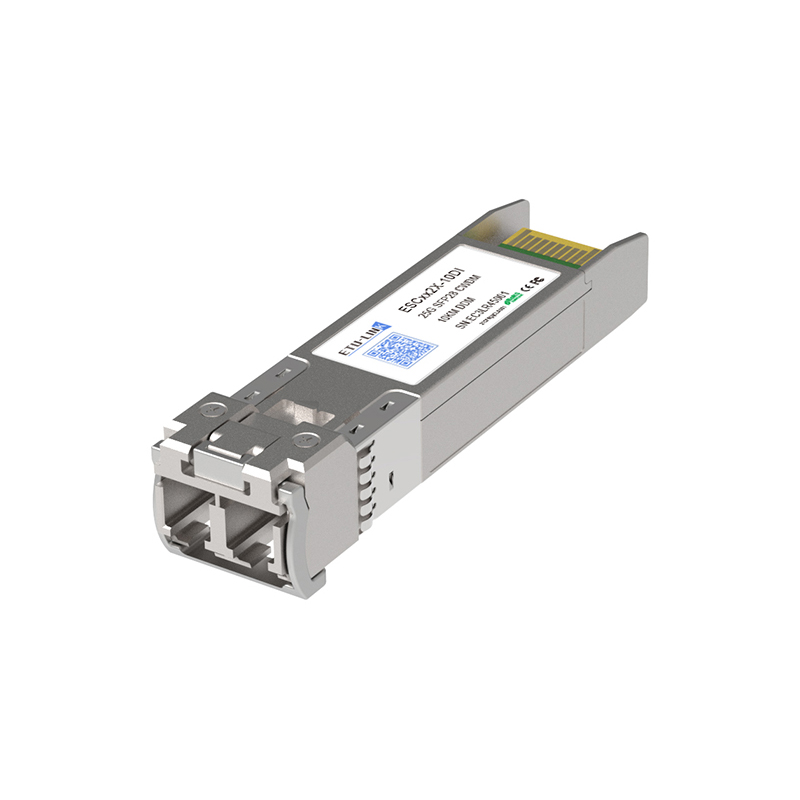 |
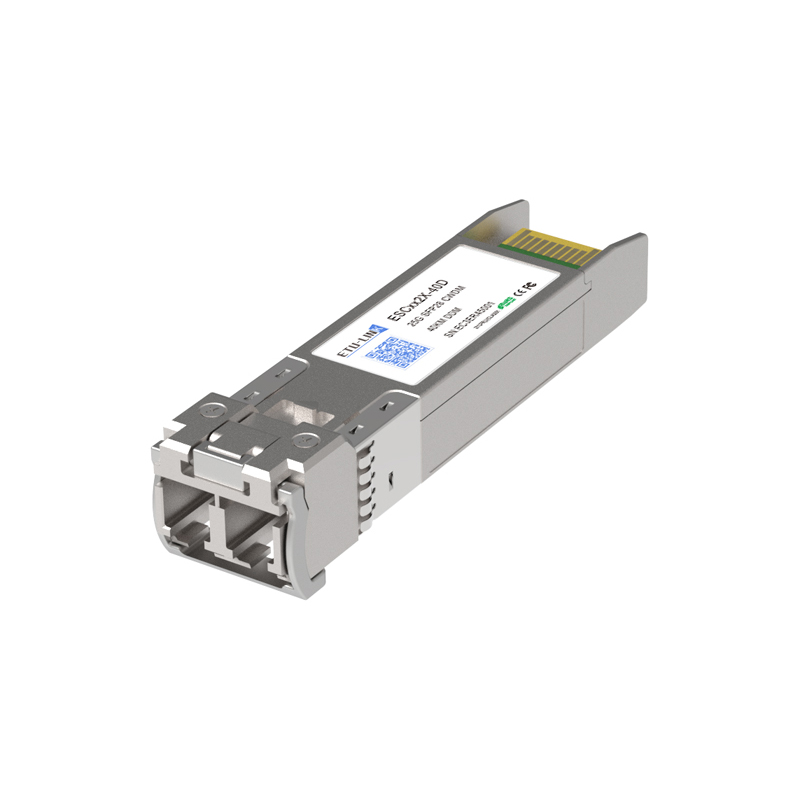 |
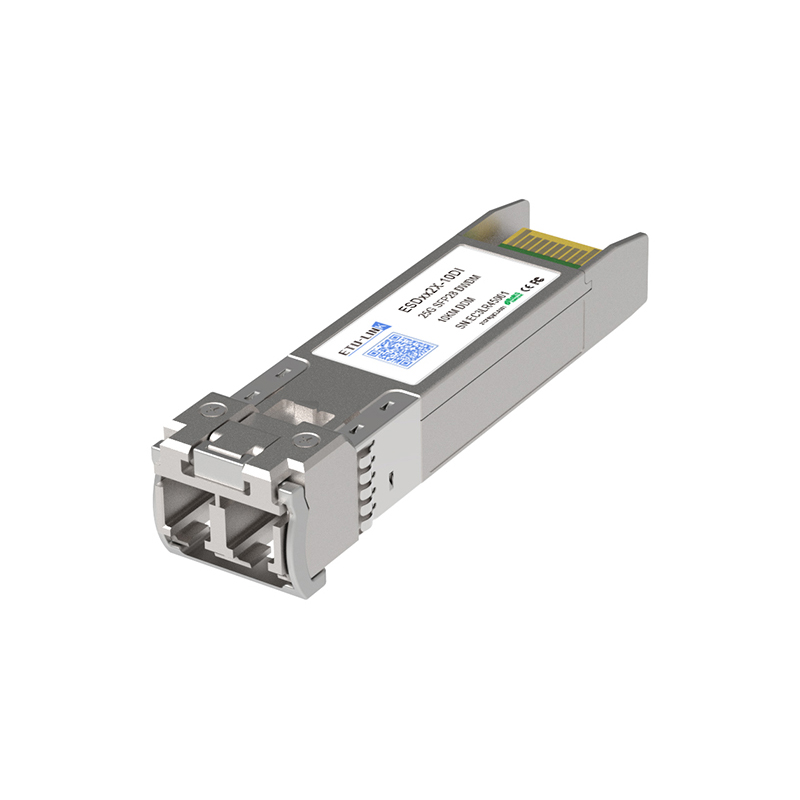 |
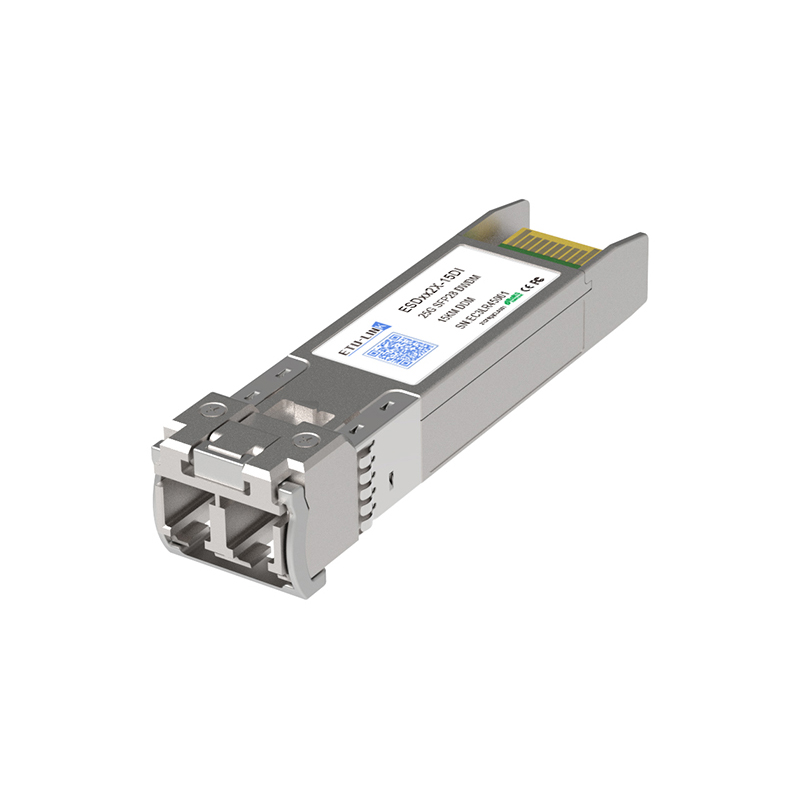 |
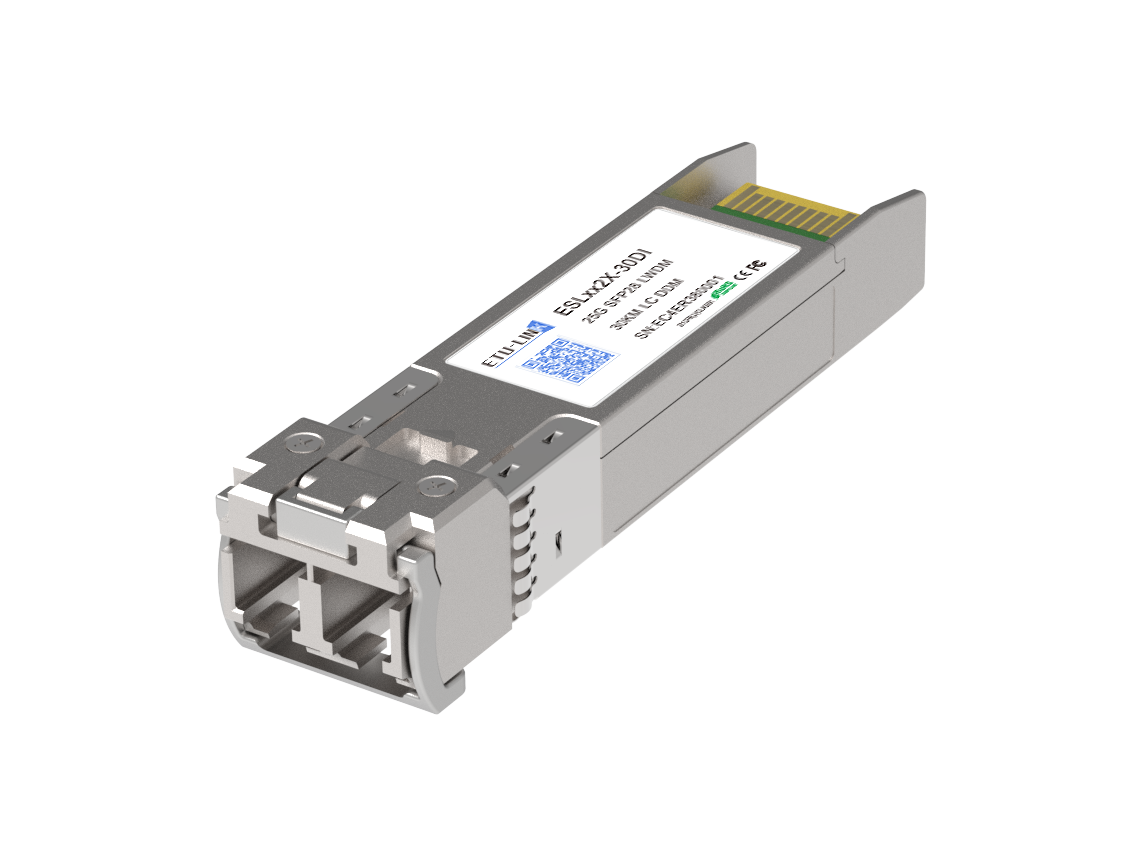 |
| 25G CWDM 10KM | 25G CWDM 40KM | 25G DWDM 10KM | 25G DWDM 15KM | 25G LWDM 30KM |
|
25G |
25G |
25G |
25G | 25G |
|
10KM |
40KM |
10KM |
15KM |
30KM |
| CWDM | CWDM | DWMD | DWDM |
LWDM |
|
LC |
LC |
LC |
LC |
LC |
|
SM |
SM |
SM |
SM |
SM |
|
DDM |
DDM |
DDM |
DDM |
DDM |
|
COM: 0°C ~70°C IND: -40°C ~85°C |
COM: 0°C ~70°C
IND: -40°C ~85°C |
COM: 0°C ~70°C IND: -40°C ~85°C |
COM: 0°C ~70°C
IND: -40°C ~85°C |
COM: 0°C ~70°C IND: -40°C ~85°C |
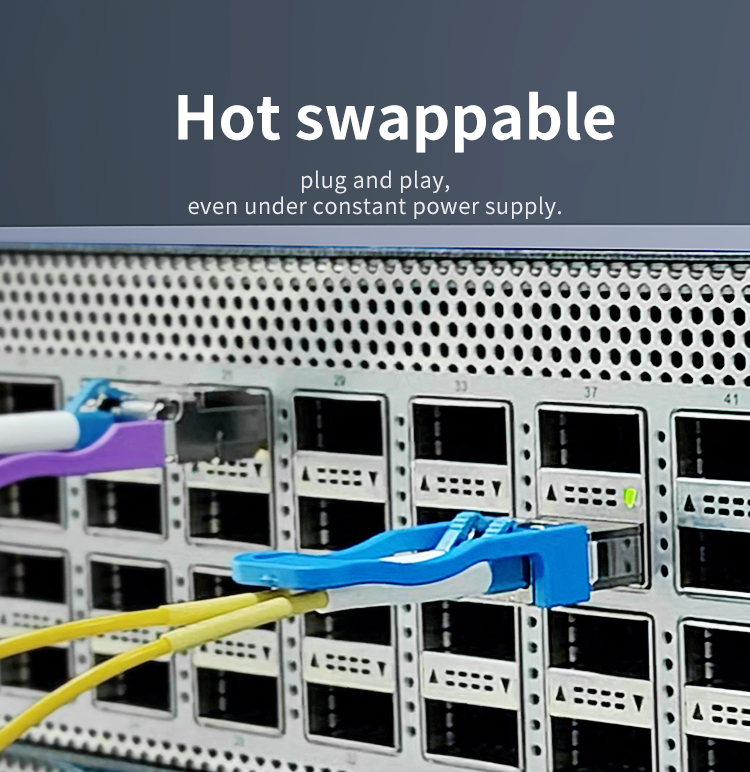
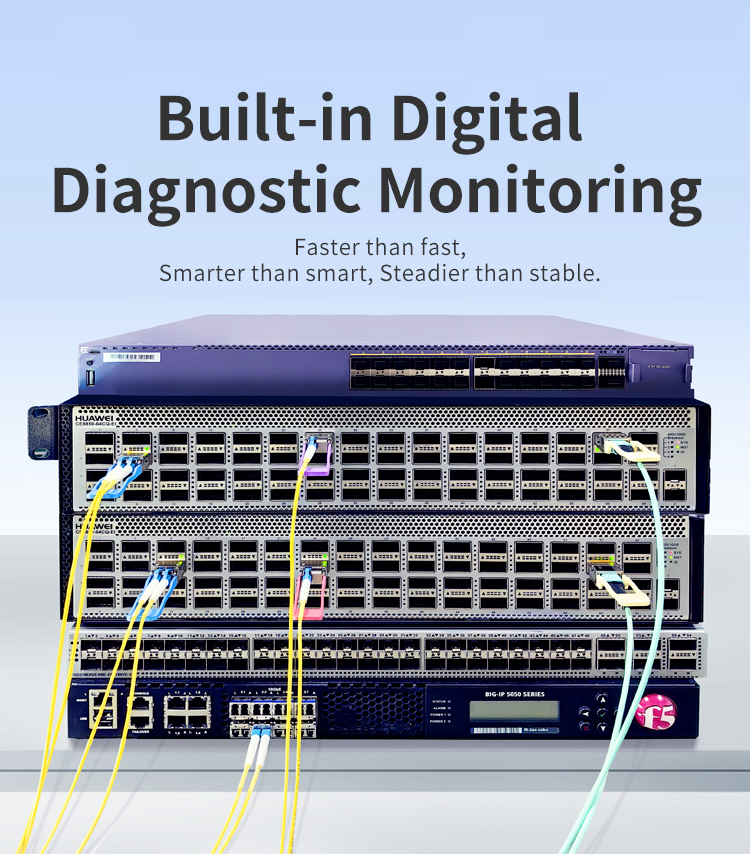
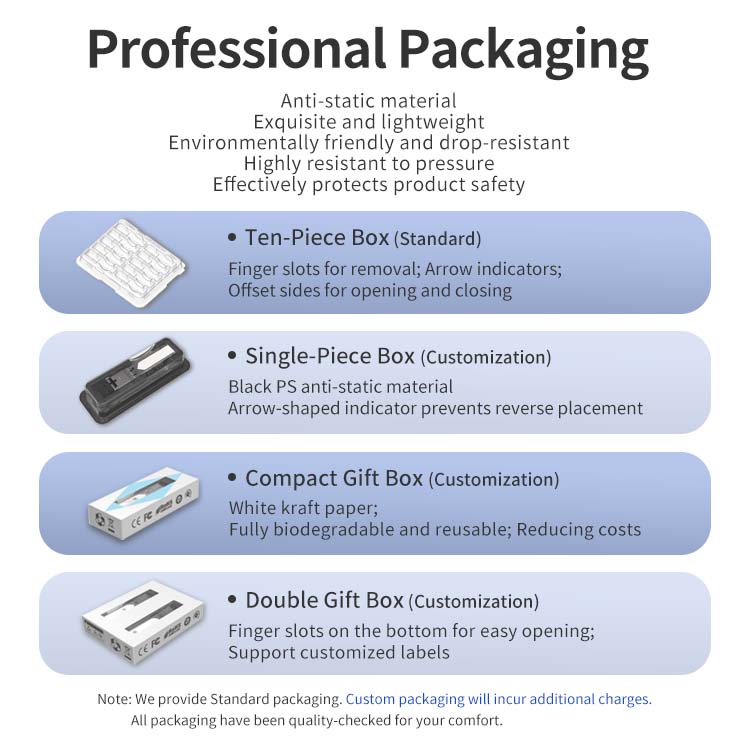
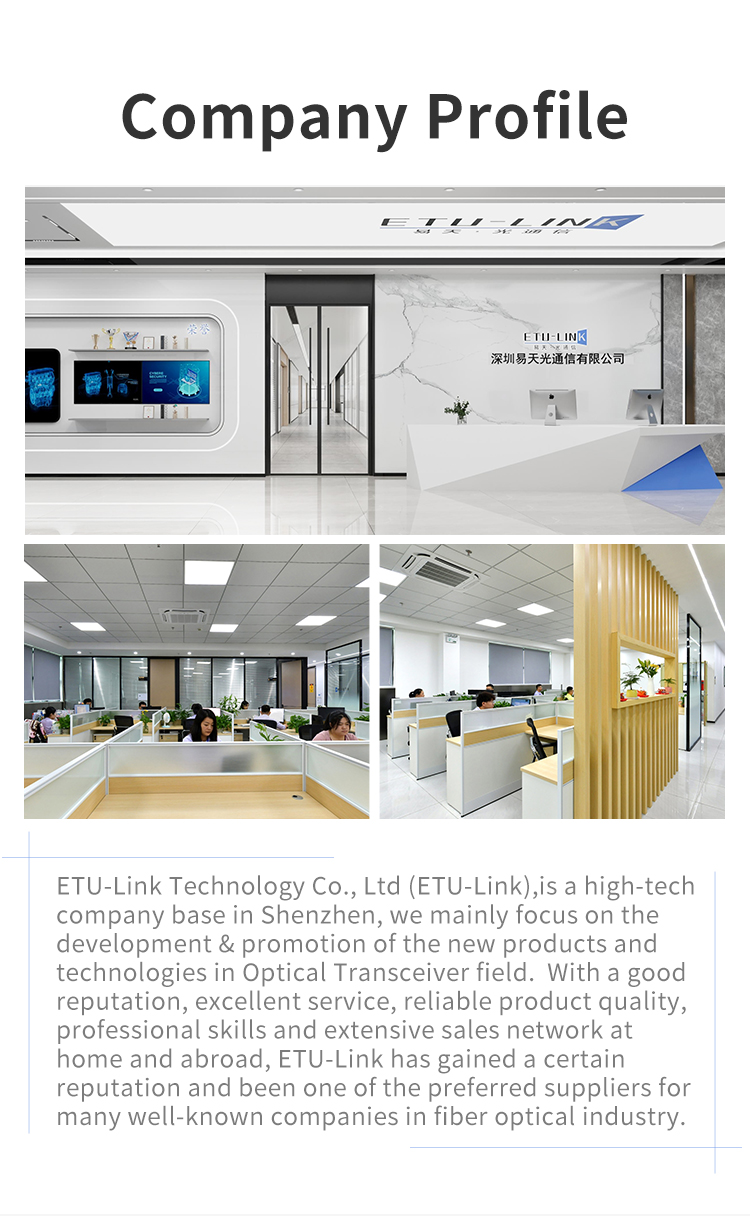
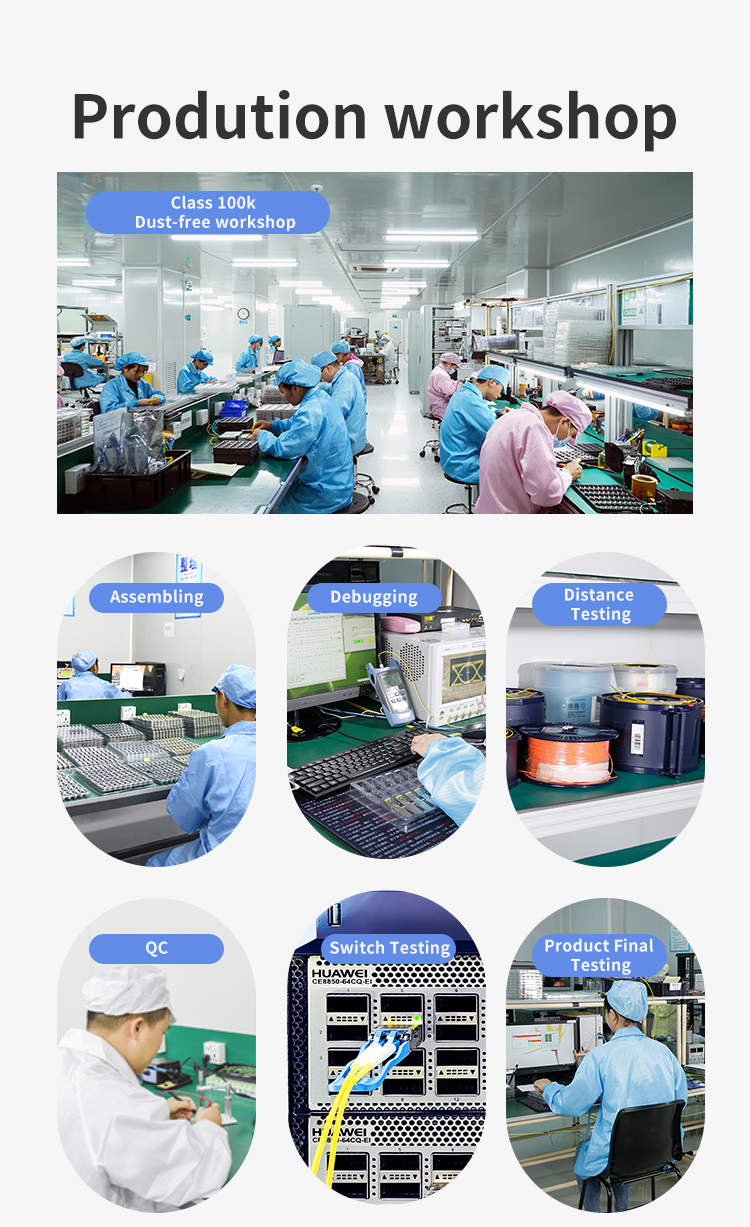
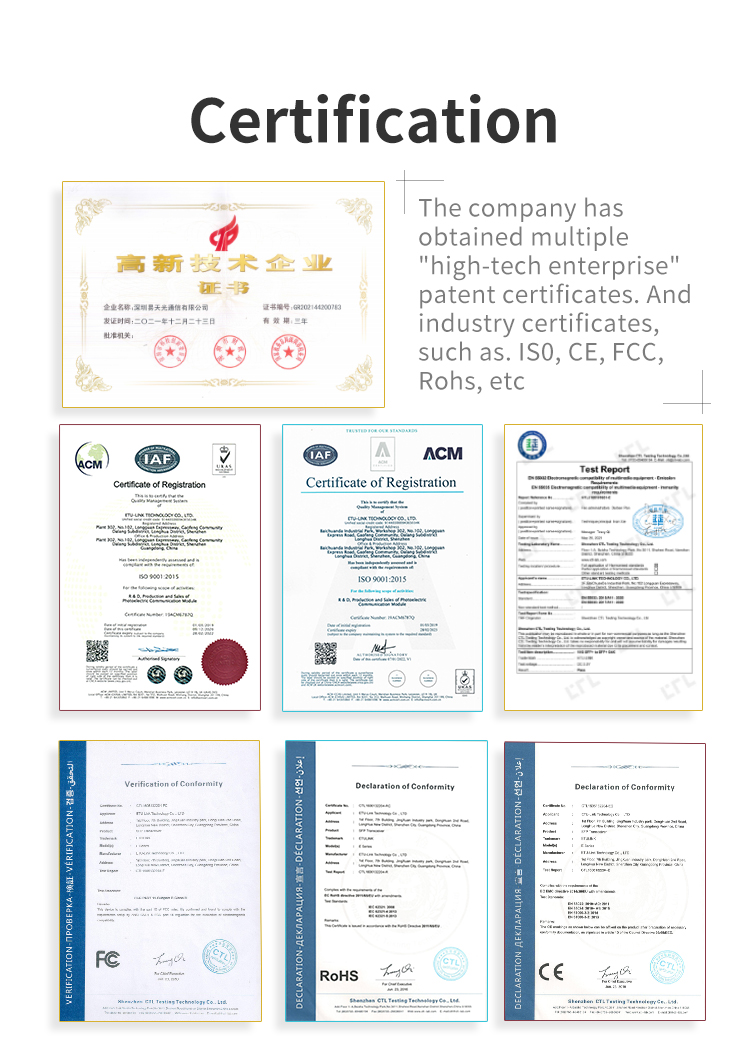
Q1: What is a 25G SFP28 transceiver?
A1: 25G SFP28 transceiver is a compact, hot-pluggable optical module that supports 25Gbps data transmission over fiber or copper cables. It is widely used in data centers, telecom networks, and enterprise networks.
Q2: What are the key differences between SFP28 and SFP+?
A2: SFP28 supports 25Gbps speeds, while SFP+ supports 10Gbps. SFP28 is backward-compatible with SFP+ ports but requires appropriate configuration for optimal performance.
Q3: What distance can a 25G SFP28 SR transceiver cover?
A3: The 25G SFP28 SR (Short Reach) module typically supports up to 100 meters over OM4 multimode fiber (MMF).
Q4: Can 25G SFP28 modules work in 10G switches?
A4: Yes, most 25G SFP28 modules are backward-compatible with 10G SFP+ ports, but they will operate at 10Gbps speeds.
Q5: What are the common types of 25G SFP28 transceivers?
A5: SR (Short Reach) – Up to 100m over MMF
LR (Long Reach) – Up to 10km over SMF
ER (Extended Reach) – Up to 40km over SMF
Copper (DAC/AOC) – Short-distance direct attach solutions
Q6: What are the typical applications of 25G SFP28 transceivers?
A6: Data center spine-leaf architecture
5G fronthaul/midhaul networks
High-performance computing (HPC) clusters
Enterprise network upgrades from 10G to 25G
Q7: What is the wavelength of a 25G SFP28 LR transceiver?
A7: The 25G SFP28 LR module typically operates at 1310nm wavelength, optimized for single-mode fiber (SMF) transmissions up to 10km.
Q8: How does 25G SFP28 compare to 100G QSFP28 in cost and performance?
A8: 25G SFP28 is more cost-effective for short-to-medium distances (≤10km), while 100G QSFP28 suits high-density 100G deployments.
Q9: Do 25G SFP28 modules support DDM/DOM monitoring?
A9: Yes, most MSA-compliant modules include Digital Diagnostics Monitoring (DDM/DOM) for real-time performance tracking.
Q10: What’s the future of 25G SFP28 with 50G/100G adoption?
A10: 25G remains relevant for cost-sensitive upgrades, especially in 5G fronthaul and enterprise edge networks, despite higher-speed alternatives.
If you are interested in our products and want to know more details,please leave a message here,we will reply you as soon as we can.
Categories
© Copyright: 2025 ETU-Link Technology CO ., LTD All Rights Reserved.

IPv6 network supported
Friendly Links:
易天官网